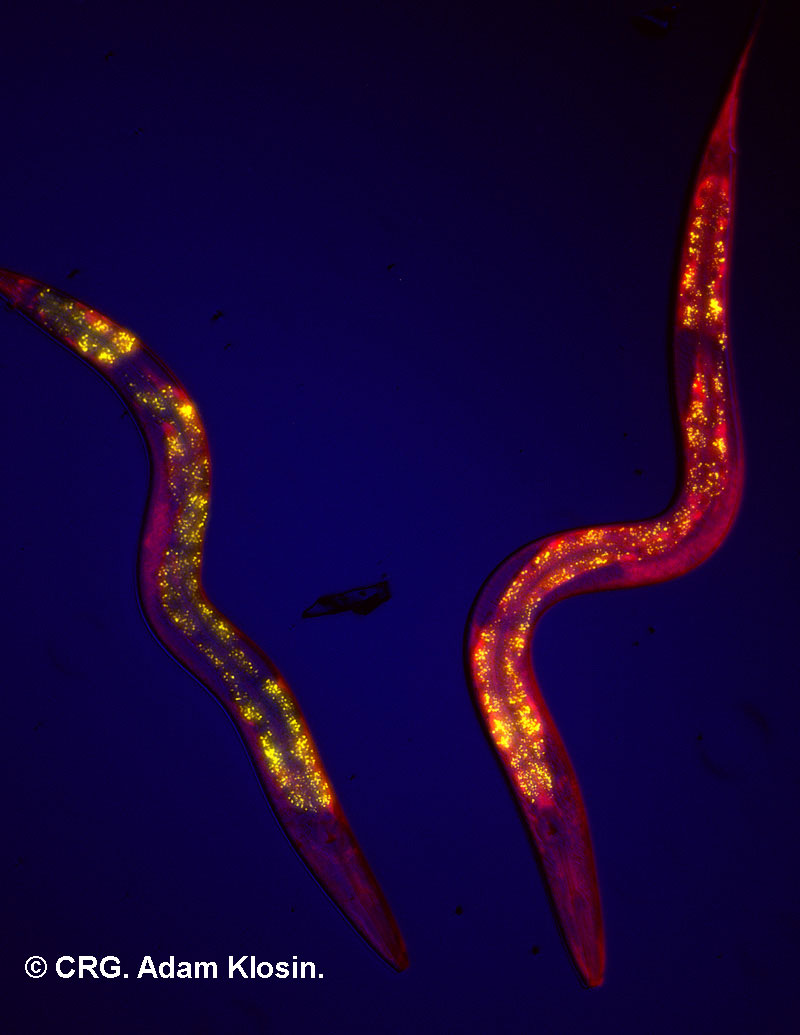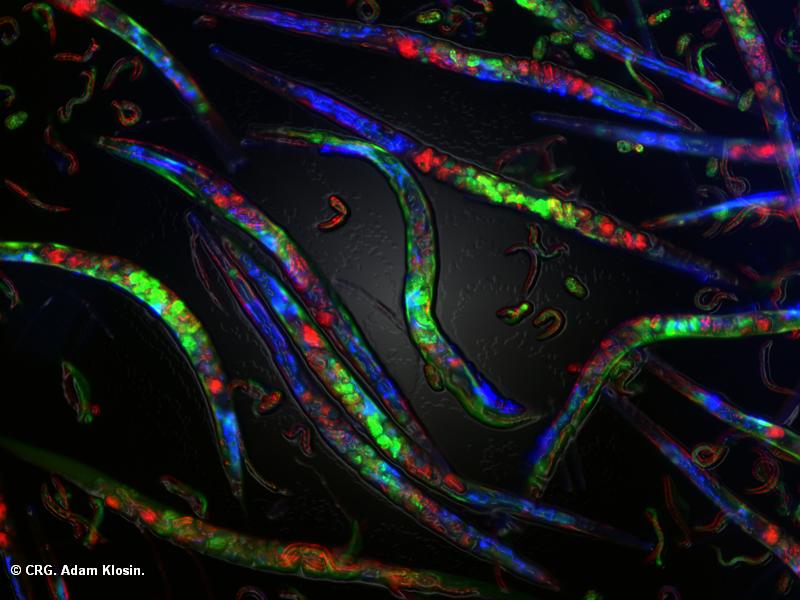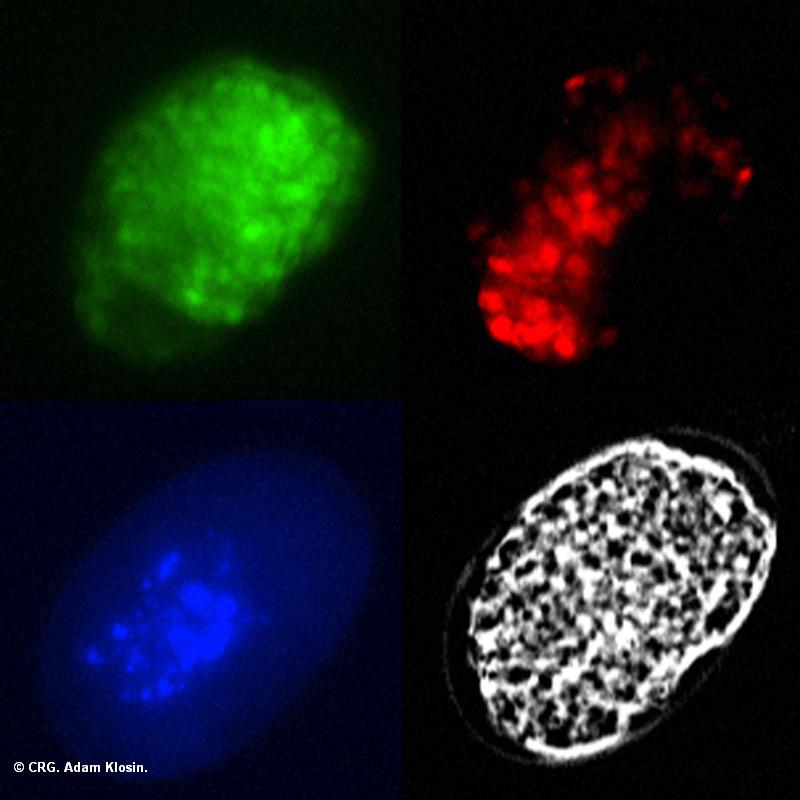Genetic Systems
Explore CRG Images
The aim of the CRG photo gallery is to provide an overview of our scientists’ research activities through the images generated in the course of their research projects.
All our images are available on demand in digital form with higher quality for for-profit and any other uses. For any of these requests please contact us.

Title: Worms are different
Ref: BL-0003
Author: Adam Klosin
Size: 800 x 1035
Description: Two twin C. elegans worms showing different levels of chaperone expression.
Explore CRG Images
The aim of the CRG photo gallery is to provide an overview of our scientists’ research activities through the images generated in the course of their research projects.
All our images are available on demand in digital form with higher quality for for-profit and any other uses. For any of these requests please contact us.

Title: Worms come in many colors
Ref: BL-0002
Author: Adam Klosin
Size: 800 x 800
Description: Caenorhabditis elegans adult worms with their progeny trapped within them. Embryos where subjected to reprogramming into muscle fate the day before. In red (mCherry) - muscle spcecific transcriptional reporter. In green - GFP driven from a heat shock promoter. In blue - gut granules present in the intestine. Small red spheres are reprogrammed embryos. Green spheres are embryos that did not reprogram despite strong level of induction of transgene.
Explore CRG Images
The aim of the CRG photo gallery is to provide an overview of our scientists’ research activities through the images generated in the course of their research projects.
All our images are available on demand in digital form with higher quality for for-profit and any other uses. For any of these requests please contact us.

Title: C. elegans reprogrammed embryo.
Ref: BL-0001
Author: Adam Klosin
Size: 800 x 600
Description: Most cells of a C. elegans embryo where reprogrammed to muscle fate by overexpression on a Transcription Factor Myo-D. Green - muscle specific reporter. Red - foregut specific reporter. Blue - autofluorescent gut granules. Foregut precursor cells are more resistant to reprogramming than other embryonic blastomers.
Ben Lehner
Research and Interests
To what extent is it possible to predict phenotypic differences amongst individuals from their completely sequenced genomes? Dr. Lehner’s research focuses on combining genetic information with phenotypic predictors to understand how differences between individuals originate in the interaction between genetic, environmental, life history, parental and stochastic sources of variation.
Further understanding how differences between individual originate, will provide better prediction of disease risks and improved treatment outcomes for patients.

